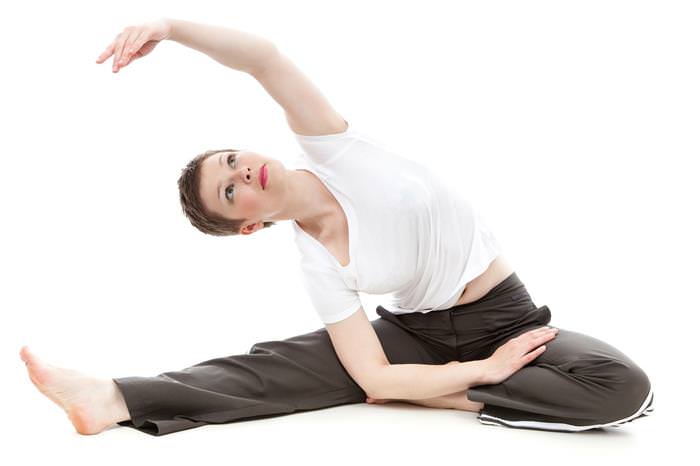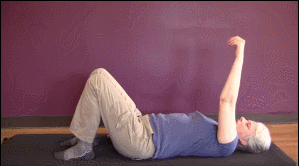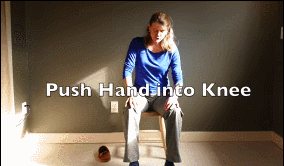
|
In recent years, the Feldenkrais Method has gained popularity around the world thanks to one main advantage: the exercises* help relieve pain and strengthen muscles and joints with minimal effort. The method, named after the inventor – Physicist Dr. Moshe Feldenkrais, can help treat almost any muscular pain and was proven to be effective in treating handicapped individuals that cannot perform regular exercises*. The following ten exercises* are very easy and can help relieve an assortment of pain, without the need for special equipment. |
 |
|
|
|
Relieve stiff shoulders The shoulders are some of the most important joints in the body and bear the brunt of stress, tension, weight, and the general humdrum of everyday life. You should perform these exercises* at the end of every day while lying down, and practicing deep breaths – this will deal with not only the stiff muscles, but also the tension of the day. Shoulder taps Gently banging your shoulder against a hard surface may sound counterproductive, but it actually shocks the shoulder in a way that causes it to release stiff muscles in the area, improving your range of motion. These taps allow you to feel exactly how these light shocks move through your arms and relieve the stress in your shoulders. 
Performing the exercise*
Important information
Arm twists This exercise helps release stiff shoulders and can relieve pain in the neck and lower back. 
Performing the exercise
Important information
|
|
|
|
Treating back pain When you experience back pain, it is important that you avoid exerting yourself, at least while the pain is sharp and intense. This is where the Feldenkrais Method shines – the exercises* don’t require you to move too much or exert the muscles, and experts claim that they even help improve the neural connection between the brain and the body, all the while encouraging the brain to reduce “pain signals”, not unlike when getting a back massage. Moving the leg joints The spine is the highway that connects our brain to the rest of our body, so moving the joints that connect to it is a great way to treat back pain. Through practicing the correct movements of the joints, you can feel how the back moves with them effortlessly. 
Performing the exercise
Important information
Lower body tilt Tilting your pelvis and legs to the side creates a spiral motion that affects the back and spine, simulating a deep tissue massage. 
Performing the exercise

Important information
|
|
|
|
Improve your posture and balance By focusing on the joints in your lower regions, you can significantly improve your balance, ease flatfeet-related problems, and reduce pain caused by standing for prolonged periods due to posture. These exercises* are particularly beneficial for people who suffer from joint pains in their legs, which project to the lower back and spine. Heel twists The heel is the largest bone in the foot, and practicing distributing your body weight across it will improve your posture and balance. 
Performing the exercises*
Important information
Moving the pelvic joints The pelvis connects your legs with the rest of the body, and strengthening it contributes to both your posture, and to relieving pain caused by standing for a prolonged period or an over exertion of the leg muscles. 
Performing the exercises*
Important information
|
|
|
|
|
|
Relieve neck pain exercises* that help to relieve a stiff neck or muscle pain in that region not only reduce the uncomfortable sensation but also strengthens the neck muscles and reduces the pressure the head applies to that area. These exercises* are a great replacement for a neck massage – something that is difficult to perform on your own. Support your head with your hand This simple exercise was proven to help even severe neck problems, such as whiplash, which usually manifest after an accident. The exercise reduces the strain on the neck by the head and can be performed anytime, anywhere. Other benefits are stress relief and reducing the intensity of headaches. Performing the exercise
Important information
Upper body twist This exercise only takes two minutes and is an excellent excuse to take a time out from everything that occupies your mind while relieving any stiff neck muscles. This is a great way to reduce stress while improving your neck and upper body’s range of movement. 
Performing the exercise
Important information
|
|
|
|
Thigh pain relief Pain related to the thigh muscles can affect how comfortable sitting would feel like, hinder your balance and make it harder to walk. These Feldenkrais exercises* were shown to be highly beneficial for rehabilitating patients after a knee surgery, or after experiencing pain caused by such injuries. Leg tapping Your knees support your thighs and can affect and even cause thigh pain and posture issues. This exercise will help you distribute your body weight more evenly, as well as achieve the full potential of the movement of your feet. 
Performing the exercises*
Important information
Knee push This exercise focuses on reducing the strain on your knees through strengthening the foot, it’s joints, and the knees themselves. 
Performing the exercise
Important information
*The Feldenkrais Method® is a neurological process to coordinate movement and function better.
Videos and other information courtesy of Annie Thoe,You can find more information and helpful videos on the Feldenkrais method on her site: www.sensingvitality.com. |